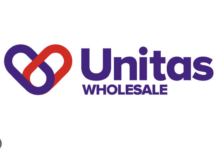Like or loathe housework, household and laundry has always been a category that sells whatever the time of year. But fuelled by Airbnb and the trend for home entertaining, it has never been so important to get the category right in-depot.
From cleaning products for the kitchen or bathroom to washing powders and air fresheners, it is estimated that the category is worth £647.4m in convenience. And there are some clear winners – according to data expert Statista, in the 12 months to June 2015, paper disposables made up 31.8% of the total UK market, with fabric detergents making up 22.1%. Following on from these big-hitters are household cleaners, fabric enhancers, dishwasher detergents and air fresheners.
But with larger own-brand ranges performing well and customers using discounters such as Aldi and Lidl to top up their household products at a value price, suppliers and wholesalers must target their customers with the right items and get the most out of merchandising the category in-depot.
According to Unilever, convenience accounts for a significant proportion of the market for household products, with 78% of shoppers buying at least two cleaning products when they shop.
The way we clean has changed, too. Instead of dedicating hours to household chores, time-poor lifestyles mean we are cleaning little and often or as we go along.
In response, the discounters are cleaning up. Kantar data last year showed
sales of own-label lines up by 14.4% in the year to May. Nick Ganich, brand manager for home care at Procter & Gamble (P&G) confirms the trend: “The home care category has been challenging over the past year, with volume at to declining and value eroding. We continue to see change in the way that people shop, with a proliferation across channels and retailers, with more volume shifting from large grocers and traditional trade to discounters and e-commerce.”
To tackle the challenges of an increasingly fragmented market, P&G is working on simplifying its range, while focusing on best-sellers and bringing ‘meaningful’ new products to the market, highlighting a preference for innovation that helps customers carry out household chores faster and in ever-simpler ways, he adds.
Innovation in bathroom products continues with specialist offerings. For example, Reckitt Benckiser has developed extensions to its Cillit Bang range, including a ‘Grime and Lime’ formula to tackle limescale and soap scum and Active Foam Soapscum & Shower Citrus Force, which taps into consumers’ interest in ‘turbo power’ products.
But demand for all-purpose cleaners is increasing, too, particularly in value lines. Part of this is down to a growing desire from consumers to purchase ecologically-friendly products.
Last year, SC Johnson, manufacturer of the Mr Muscle and Toilet Duck brands, made the unprecedented move of revealing the ingredients inside its products, after fragrances in household products came under scrutiny after being linked to respiratory problems.
A spokesperson for SC Johnson says: “The reason we have undertaken this initiative is that SC Johnson wants consumers to know what ingredients are in the products they are using, so that they can feel comfortable with them and make educated decisions about which specific products they buy.”
Leading the concept in better-for-you cleaning products is Ecover, which has a bathroom cleaner and limescale remover in a 500ml spray. Also available is a toilet cleaner range, which comes in four fragrances in containers between 750ml and 5l in size. The brand’s multi-purpose cleaner is also available in 500ml, 1l and 5l containers, with refills available.
Continuing the ecological trend, P&G brand Fairy recently announced that it was cutting the use of harmful phosphates in its products. The brand has also put significant advertising spend behind its range of all-in-one dishwasher capsules, which takes away the need for pre-washing.
“With Fairy ADW representing almost 30% of the market and o ering superior cleaning without the need to pre-rinse, there is a real opportunity to grow category value,” says Nick Ganich.
Innovation also continues in disposable kitchen rolls, with towel brand Plenty last year announcing its biggest-ever product upgrade across its core range and claiming that its products were now 15% stronger, even when wet. Holly Baron-Morgan, brand manager for Plenty, says: “Additional strength ensures that Plenty is always fit for purpose and more versatile than ever before.”
In cleaning aids, Daniel Neumann, managing director of EasyDo Products, says the redesigned and relaunched range of Dishmatic products last month followed research that suggested greater visual impact on-shelf was the key to sales growth. The product’s sponge holder is fillable and dispenses washing-up liquid onto refillable sponges.
“We needed to communicate better on-pack to stand out amongst both new and existing users,” he says. “We have done this with the new design and the new look will create greater impact on-shelf and lead to more sales opportunities for the retailer.”
He adds: “Consumers also say they see Dishmatic as effective, with a friendly and quirky personality.”
One category that has stagnated but which is predicted to grow is air fresheners.
“Value sales in the air care category have stalled somewhat, but there is an appetite for innovation in the category and potential for the development of more premium scents and formats to boost the market, building on the positive impact that brand new products have had on the category in recent years,” says Richard Hopping, brand and household analyst at Mintel.
Fuelled by the household trend in scented premium candles, the category has seen vast innovation. For example, Reckitt Benckiser rolled out its Air Wick Life Scents range last year, alongside oil plug-ins, auto-sprays and colour-changing candles. The range, which contains seasonal scents such as Mulled Wine and Summer Delights, was described as the biggest development in the brand for many years, and was supported by a £4m cross-platform marketing campaign, including TV, digital and social media activity.
The laundry market has come a long way from a box of powder and a bottle of fabric softener. According to Daniel Jalalpour, senior brand manager for fabric care at P&G, there is “significant movement” ongoing in the laundry category. While washing powders remain an important sub-segment of the detergent category, there is an ever-growing demand among consumers for wet formats, as two-thirds of shoppers now reach for liquid detergents and liquitabs.
“On a cost per load basis, the consumer pays the biggest premium for the convenience and performance of liquitab formats, which in turn drives value in the category,” he says.
P&G relaunched Ariel in a three-chamber liquitab pod in 2013, going on to use the technology across all its brands, including Fairy Non Bio, Bold and Lenor.
Jalalpour believes that there is still huge potential to attract new users to liquitabs, with 30% of households buying them at least once a year. “We are committed to fuelling category value by continuing to drive awareness and trial of this format,” he says.
Bay Bashir, Lifestyle Express, Belle Vue Convenience, Middlesborough
“I look for value from my wholesaler. And I look to give value to the consumer. Brands sell well, like Fairy and Comfort. Lenor is currently on at half-price at £1, so I’ll buy up a lot and continue the promotion. Even on discounted products I can still make a good 20% margin. Promotions are high footfall drivers. I tend to find that people will look for value in bleach and washing up liquid brands, but when it comes to clothes washing, then they mainly stick to the brands they like. It would make it so much easier for me if when I went to the wholesaler that the products were all together. At the moment I go from section to section, whereas if they grouped value, and premium all together then my shop would be a lot quicker.”
Joey Duhra, Premier Jules Convenience, Hadley
“My customers will change brands if they are on offer. We run offers every month – a range of £1 washing powders, 50p cleaning products and £1 cleaning products. People seem to stick to brands but they are also loyal to their pockets. The own-branded labels have got better in quality so I have seen a shift towards them. There was a time when the bleach was like water, but that’s changed. My wholesaler is Booker, and I find the layout there easy to shop because it reflects my aisle – everything is together with cleaning products on one side, and washing products on the other.”







